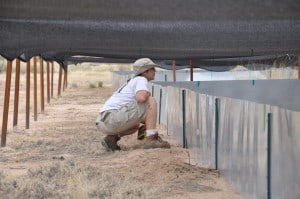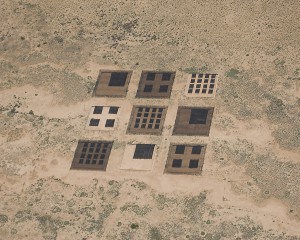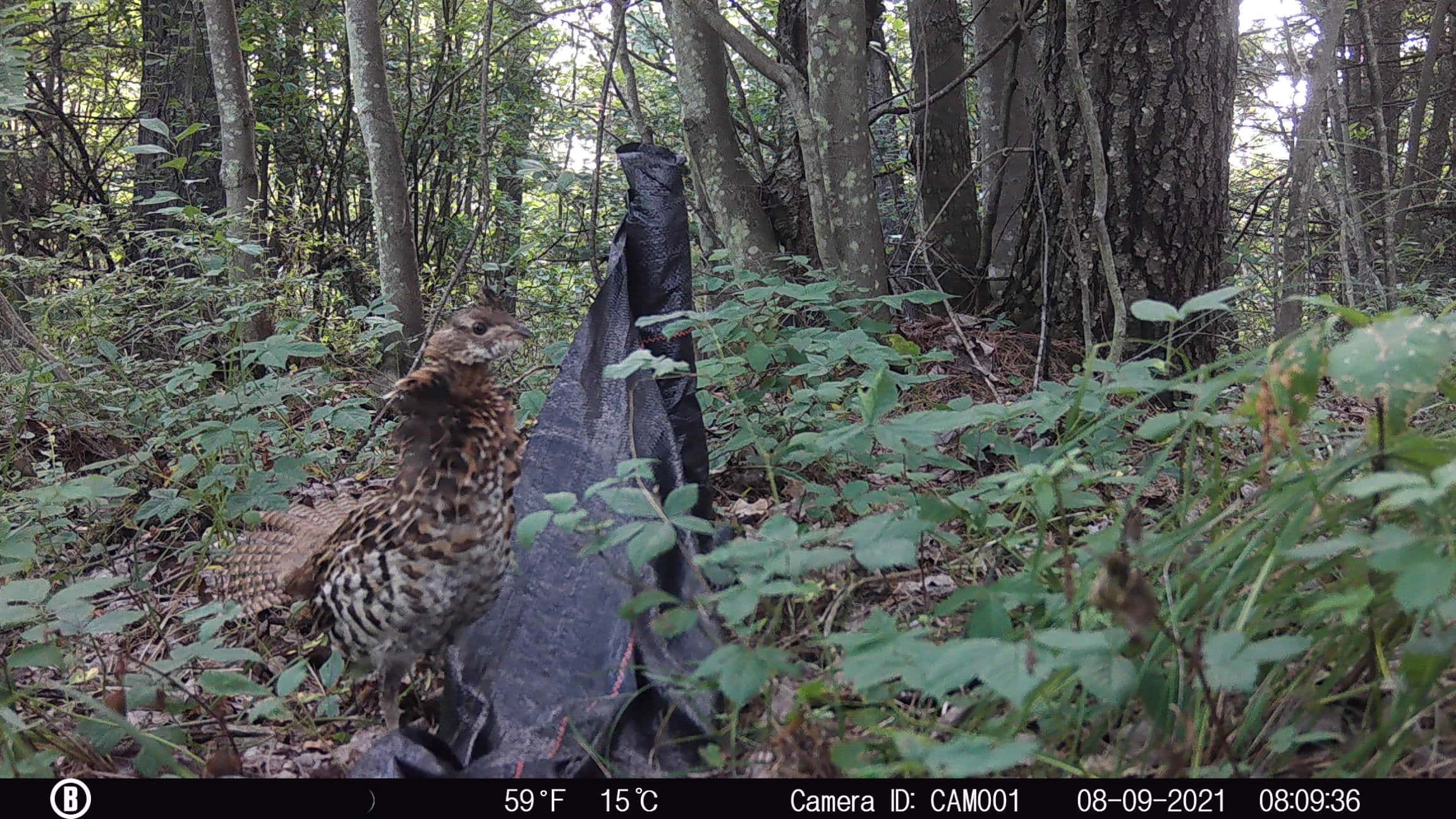Share this article
Patchy shade helps lizards survive the heat
Lizards may be in even worse trouble than ecologists thought. The small, cold-blooded animals are highly sensitive to climate change, and researchers have predicted that around 20 percent of species will go extinct by 2080. But those models ignored what may be a key factor: the distribution of shade across the landscape. Now, researchers have found that the farther lizards must travel between patches of shade, the more they struggle to stay cool.
“Those other models just assumed you instantly got to that piece of shade, and it cost you no energy to get there,” said Michael Sears, a physiological ecologist and ecological modeler at Clemson University and first author of the study published this week in Proceedings of the National Academy of Sciences. “They ignore the fact that animals have to move.”

Kathy Dilliplane observes a lizard during a trial, keeping track of where it moves in a partly shaded enclosure. ©Matt Schuler
Sears first started thinking about shade distribution in graduate school, when he noticed lizards behaving differently in different environments. In places with dense brush cover, lizards often traveled between bushes, even at the hottest times of day. But when bushes were farther apart, the lizards stayed put. “All day you could see these lizards stuck under bushes,” Sears recalls.
He began to suspect that shade distribution was crucial for the lizards, perhaps as important as the temperature itself. To put his hunch to the test, Sears and his colleagues built a computer model that simulated lizard movements and thermoregulation on different plots of land. Each plot had the same amount of shade, broken up into either one, four or 16 shady patches.
It was just as he expected. The more little patches of shade were available, the better lizards were at maintaining an ideal temperature. According to the model, shade distribution and average temperature explained roughly equal portions of the variation.
Sears published the model in The American Naturalist in 2015, then set out to test it with real, live lizards. He and other researchers built nine enclosures in the Sevilleta National Wildlife Refuge in New Mexico, each one measuring 22 yards square. Over tops of these enclosures, the researchers strung different types of shade cloth, creating environments with different background temperatures. These canopies formed a backing for smaller, denser patches of shade cloth, arranged to create the same shade patterns used in the model.
Finally, the researchers caught 54 Yarrow’s spiny lizards (Sceloporus jarrovi) and surgically implanted temperature recorders in their abdomens. The devices, which were about the size jelly beans, recorded lizards’ body temperature every 12 minutes. Meanwhile, researchers recorded where lizards went as they explored the shade-dappled enclosures. The researchers removed the temperature loggers and released the lizards at the end of the experiment.
The real lizards were strikingly similar to those in the model. In pens with distributed shade, they kept their bodies close to ideal temperatures, whereas in pens with one big patch of shade, their temperatures varied widely.
Barry Sinervo, an evolutionary biologist at the University of California, Santa Cruz and creator of past models estimating lizard extinctions, agrees that researchers should consider how shade is distributed.
“It is a good paperpoints that they make are clearly important for ectotherms,” he wrote in an email.

An aerial photograph shows lizard enclosures in Sevilleta National Wildlife Refuge in New Mexico. ©Michael Angilletta
In Sinervo’s original paper, he and his colleagues noted that lizards in dense tropical forests are going extinct faster than lizards in other areas, most likely because the forests are uniform in temperature and shade coverage — an idea previously proposed by Raymond Huey and colleagues at the University of Washington. But until now, no one had built a model that could predict how body temperatures would vary as animals moved through a complex environment.
The findings suggest that to understand the impacts of climate change on animals, researchers need to include shade distribution in their calculations.
“We might not be able to just download weather data from the local weather station and say, okay, could a lizard tolerate that,” said Sears. “We’re going to have to also think about the lizard’s behavior and physiology, and how the lizards are interacting with features on the ground.”
This is a tall order, since it will involve estimating how shade is arranged across natural landscapes. But Sears thinks the effort will be worth it. Humans already alter shade distribution, manipulating environments through everything from logging to habitat restoration. If we understand how such actions impact species’ ability to stay cool, we may be able to help them survive in a warming world.
Header Image: Two male Yarrow’s spiny lizards explore an enclosure in Sevilleta National Wildlife Refuge in New Mexico. ©Travis Rusch








